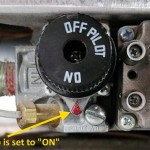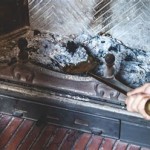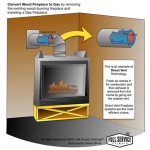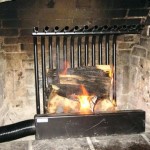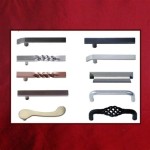Vented Gas Log Fireplace with Remote: A Comprehensive Overview
Vented gas log fireplaces offer a convenient and aesthetically pleasing alternative to traditional wood-burning fireplaces. They replicate the look and feel of a real wood fire without the hassle of chopping wood, building a fire, and cleaning up ashes. The inclusion of a remote control further enhances the user experience, providing added convenience and control over the fireplace's operation.
These systems are designed to be installed within an existing, fully functional wood-burning fireplace. Unlike ventless gas logs, vented gas logs require a fully operational chimney to properly expel combustion byproducts. This is crucial for ensuring the safety and health of the occupants within the home. The "vented" designation highlights this necessary venting requirement.
The allure of a vented gas log fireplace resides primarily in its visual appeal. The flames are typically larger and more realistic compared to ventless options. This visual realism is a key factor driving consumer preference, even though vented logs are generally less energy-efficient than their ventless counterparts.
The addition of a remote control significantly enhances the user experience. This allows for convenient control over the flame height, heat output (to a limited extent), and on/off functionality from a comfortable distance. This feature is particularly beneficial for individuals with mobility issues or those who simply prefer the convenience of remote operation.
Understanding the key features, benefits, installation requirements, and potential drawbacks of a vented gas log fireplace with a remote is essential for making an informed decision. The following sections will delve into these aspects in detail.
Key Point 1: Operational Characteristics and Safety Considerations
Vented gas log fireplaces operate by burning natural gas or propane, which fuels the flames that dance around ceramic or refractory logs. These logs are meticulously crafted to mimic the appearance of real wood, often incorporating details like bark texture, knots, and charred surfaces. The realism of these logs contributes significantly to the overall aesthetic appeal of the fireplace.
The primary purpose of a vented gas log fireplace is to provide ambiance rather than significant heat output. While some heat is generated, a substantial portion is lost up the chimney. This inherent inefficiency is a trade-off for the larger, more realistic flames that characterize vented systems.
Safety is paramount when operating any gas appliance. A properly functioning chimney is non-negotiable for vented gas logs. The chimney must be inspected and cleaned regularly to ensure proper drafting and prevent the buildup of dangerous gases such as carbon monoxide. Carbon monoxide detectors are crucial safety devices that should be installed and maintained in any home with a gas-burning appliance.
The remote control typically operates using infrared (IR) or radio frequency (RF) signals. IR remotes require a direct line of sight to the receiver on the fireplace, while RF remotes offer greater flexibility and can operate through walls and other obstructions. The remote control usually allows for adjusting the flame height, turning the fireplace on and off, and in some cases, controlling a fan for circulating heat into the room. Some advanced models include timer functions and thermostat settings.
Leak tests should be performed on all gas connections during installation and periodically afterward to ensure there are no gas leaks. A qualified technician should perform these tests using a gas leak detector or a soap bubble solution. Any gas leak, no matter how small, should be addressed immediately to prevent potential hazards.
Key Point 2: Installation Requirements and Considerations
Installing a vented gas log fireplace is generally a straightforward process, but it should only be performed by a qualified professional. Improper installation can lead to safety hazards and operational problems. The installation process typically involves connecting the gas supply line to the gas log set, placing the logs in the firebox according to the manufacturer's instructions, and verifying proper venting.
Before installation, the existing wood-burning fireplace must be thoroughly cleaned and inspected. The damper must be permanently locked open to ensure proper ventilation. This is a critical safety requirement that should not be overlooked. The chimney should also be inspected for any cracks or damage that could compromise its integrity.
The gas supply line must be sized appropriately to provide adequate gas flow to the fireplace. Insufficient gas supply can result in weak or uneven flames. A qualified plumber or gas fitter should determine the appropriate gas line size based on the fireplace's BTU (British Thermal Unit) rating.
The placement of the logs within the firebox is crucial for achieving the desired flame appearance and ensuring proper combustion. The manufacturer's instructions should be followed precisely to avoid blocking the burner ports or disrupting the airflow. A common mistake is overcrowding the firebox with logs, which can lead to incomplete combustion and the production of carbon monoxide.
The remote control receiver is typically mounted near the fireplace and connected to the gas valve. The receiver should be positioned in a location where it can receive the remote control signal without interference. It is also important to protect the receiver from excessive heat or moisture.
After installation, the fireplace should be thoroughly tested to ensure it is operating correctly and safely. This includes verifying proper ignition, flame height adjustment, and venting. The homeowner should also be instructed on the proper operation and maintenance of the fireplace, including the use of the remote control and the importance of regular chimney inspections.
Key Point 3: Advantages and Disadvantages of Vented Gas Logs with Remote
Vented gas log fireplaces with remote controls offer several advantages over traditional wood-burning fireplaces. The most significant advantage is convenience. The remote control allows for effortless operation, eliminating the need to manually light and tend to a fire. This is particularly appealing to individuals who are elderly, disabled, or simply looking for a hassle-free way to enjoy the ambiance of a fireplace.
Another advantage is the consistent and predictable heat output. Unlike wood-burning fireplaces, which can fluctuate in temperature depending on the type and amount of wood being burned, gas log fireplaces provide a steady and controllable heat source. While the heat output is less significant than ventless options, it still provides a noticeable warmth to the room.
The realistic flame appearance is also a major draw for many consumers. Vented gas logs are designed to mimic the look of a real wood fire, creating a cozy and inviting atmosphere. The larger flames and realistic log designs contribute significantly to the overall aesthetic appeal.
However, there are also some disadvantages to consider. Vented gas logs are less energy-efficient than ventless options, as a significant portion of the heat is lost up the chimney. This can result in higher gas bills, especially if the fireplace is used frequently.
Another disadvantage is the requirement for a fully functional chimney. This can be a limitation for homes that do not have a chimney or whose chimney is in disrepair. The cost of repairing or rebuilding a chimney can be substantial, making vented gas logs an impractical option in some cases.
Finally, vented gas logs require proper ventilation to prevent the buildup of dangerous gases. This means that the damper must be permanently locked open, which can lead to drafts and heat loss when the fireplace is not in use. Some homeowners may find this to be a significant drawback, especially in colder climates.
Despite these disadvantages, vented gas log fireplaces with remote controls remain a popular choice for homeowners looking to enjoy the ambiance of a fireplace without the hassle of wood burning. The convenience, realistic flame appearance, and ease of use offered by these systems make them a compelling alternative to traditional fireplaces.
Ultimately, the decision of whether or not to install a vented gas log fireplace with a remote depends on individual needs, preferences, and circumstances. Careful consideration should be given to the advantages and disadvantages outlined above, as well as the installation requirements and safety considerations.

American Gas Log Aspen Whisper 18 In Vented Natural Fireplace Logs Complete Set With Pilot Kit And On Off Variable Height Remote Aw18hd2pss101r The Home Depot

Napoleon Gl24e Vented Gas Log Set 24 Inch

Real Fyre R Golden Oak Vented Gas Logs

Vented Gas Logs Heater Or Decorative Bart Fireside

Vented Gas Logs Natural And Propane

Fireplaceinsert Com Comfort Flame Vented Gas Log Set Berkshire Split Oak

Monessen 30 Berkley Oak Ventless Gas Logs With Remote Ready Natural Blaze Burner Propane 36 000 Btu Com

Builders Series 24 Inch Vent Free Gas Log Set Remote Ready

Hargrove Kodiak Timbers Double Stack Vented Gas Log Set With Ansi Certified Burner Kit And Manual

Hargrove Inferno See Through Shallow Vented Gas Log Set With System 4 Burner Propane Specialized Hgissss S4b



